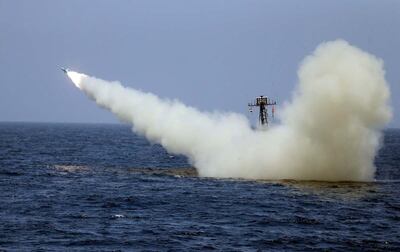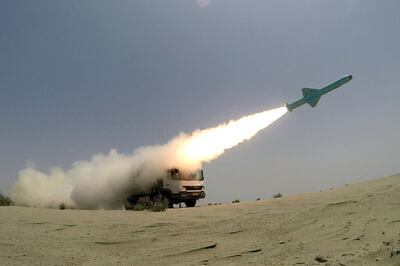Iran will significantly expand its military arsenal by buying high-grade weapons from both China and Russia once the arms embargo ends in October, leading defence analysts have said.
The world’s most advanced air defence missiles – bar those from the United States – are likely to be snapped up by Tehran along with advanced jets and submarines if the United Nations ban is lifted.
The Iranians will be able to “radically increase their capabilities” if they can buy hardware at a much reduced price as the country plays off Russia and China against each other in a “beauty competition”, said analysts at the International Institute for Strategic Studies (IISS).
To prevent the high-end arms sale the US will work hard to stop the 13-year embargo being lifted in October and has already circulated a draft UN resolution. The Americans fear that despite the current ban Iran is still arming proxies in Yemen and Syria; lifting it will make the process significantly easier.
With its most likely opponents to be the Gulf States, the US or Israel, which could conduct a bombing raid, Iran will prioritise the air defence forces, said Henry Boyd, author of IISS's The Military Balance publication. "It's the air force and air defence sector they will look to prioritise if they can get access to it. More advanced systems from China could radically increase their capabilities."
He added: “They look enviously at the capabilities that Russia and China have put into the field in recent years and would look to put that in their architecture.”

Iran could buy Russia’s highly advanced S-400 missile defence system – controversially purchased by Turkey – that would threaten both Gulf and US combat aircraft.
If that proves too expensive Iran would look to buy the Chinese long-range homing missile, the FD-2000 Fang Dun.
A number of the world’s most proficient aircraft could also be available for sale. While not as advanced as US or European fighter planes, the Russian Sukhoi Su-30 Flanker combat jet along with China’s J-10 Firebird and the joint China-Pakistan JF-17 Thunder multi-role jets are available for export.
Iran already operates the Russian-built Kilo class submarines, which it could look to update, but it may also look to purchase the Chinese Yuan, which is said to be the world’s quietest diesel-electric submarine.
Both warships and cargo vessels in Gulf waters will come under severe threat if the Iranians are allowed to buy either the Chinese YJ-18 anti-shipping cruise missile or the Russian Klub ‘Sizzler’ system that can also hit targets on land. Both are submarine-launched, making a surprise attack near impossible to detect. Iran has shown it can and will use cruise missiles after the precision attack on Saudi Arabia’s oil production site last September.
Douglas Barrie, of IISS, said Tehran was “desperate to upgrade” its military equipment but hoped to play off China and Russia to get better deals.
“They are going to have a beauty competition between Beijing and Moscow over who will get the deal – if Iran wants to stay in the conventional air-power business, and every indication is that they do,” the IISS Senior Fellow for Military Aerospace said.
While Iran’s air force has been severely underfunded, it has still managed to keep fighter jets such as the US-built F-14 and F-4, both now more than 40 years old, operational. New advanced jets, Mr Barrie said, will put Gulf States “at risk”.
Limited finances have forced Iran to develop its own defence industry with drones, accurate missiles and fast patrol boats.
With the embargo lifted military analysts believe Iran will put a "moderate investment" into foreign military hardware that will provide opponents "with a wider range of threats to counter," Mr Boyd told The National.
“If possible, it is likely to buy from both countries, possibly in the form of a high to low mix of capabilities – ordering small numbers of more capable, but more expensive systems from one country with cheaper, but less capable versions from the other.”
Professor Michael Clarke, of the Royal United Services Institute, said Iran would go for quality rather than large quantities of military hardware.
“They are going for the high-tech specialist kit, which might in the long term turn out to be cheaper than a big military. It will be a force to hold off the Americans and deal with whatever the Saudis can put against them.”
The Iranians are also eager to purchase an Awacs early warning aircraft that would allow them to control the aerial battle space, he added. Additionally they are looking to upgrade their satellite communications, surveillance and cyber capacity – “They do a lot of hacking but they’re not that good at it,” Mr Clarke added.
If the embargo lifts, Iran’s limited budget means the rearming of its military could potentially take two decades, the IISS experts added.













